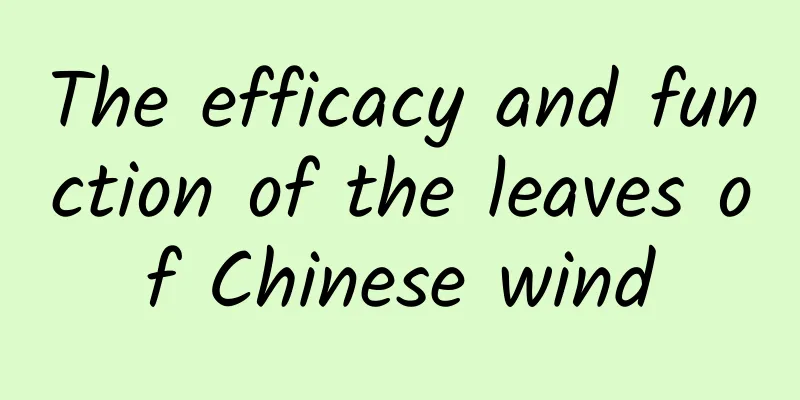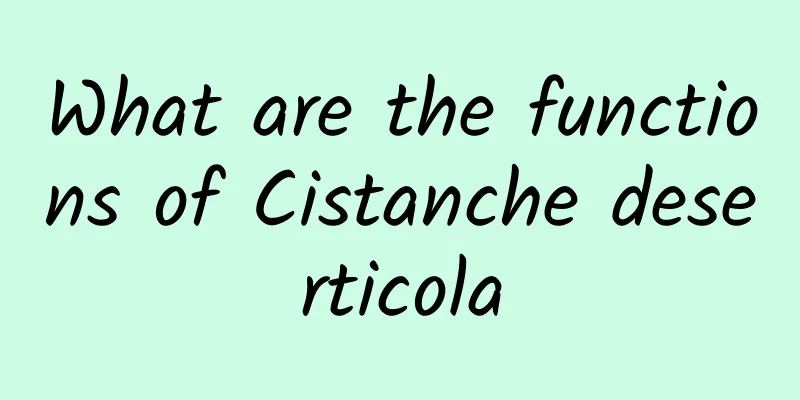The efficacy and function of the leaves of Chinese wind

|
There are many types of Chinese medicine. When we choose, we need to understand the medicine first. So do you know about the medicinal material "Coptis chinensis leaves"? Let us introduce it below. [Other names] Four-cornered wind, water peach [Source] Medicinal material source: The leaves of the Combretum plant, Combretaceae. [Original form] A multi-branched upright or stalked shrub, about 5m high. The twigs are nearly square, gray-brown, with longitudinal grooves, densely covered with brown-yellow hairs and orange-yellow scales, and old branches are glabrous. Leaves are opposite or nearly opposite; petiole 1-1.5cm long, grooved, scaly or hairy; leaf blade thickly papery, oblong to broadly lanceolate, 12-16cm long, 4.8-7.3cm wide, acuminate at apex, cuneate at base, entire, glabrous and slightly rough on both sides, with yellow-brown or orange-yellow scales on the back, midrib raised on the back, 6-16 pairs of lateral veins. The spike inflorescence is axillary and terminal or forms a panicle, with the main axis covered with brown-yellow hairs and golden and orange scales; the bracts are linear, about 1mm long; the flowers are yellow-white, about 9mm long; the calyx is bell-shaped, about 3.5mm long, covered with yellow and shiny scales and coarse hairs on the outside, and a lemon yellow and shiny hair ring inside, the hairs protrude above the calyx throat; the petals are about 2mm long, obovate; there are 8 stamens, and the filaments extend out of the calyx; the ovary is cylindrical, with 2 ovules, drooping. The fruit is oval, 1.7-2.5cm long, covered with yellow or orange-yellow scales, and has 4 wings, which turn red or purple when ripe. There is one seed, which is fusiform, has 8 longitudinal grooves, and is 1.5 mm long. The flowering period is from May to August, and the fruiting period begins in September. [Habitat distribution] Ecological environment: Growing on river banks and valleys at an altitude of 200-800m. 【Nature and flavor】 Sweet; slightly bitter; neutral 【Functions and indications】Anthelmintic and stomachic; detoxifying. Mainly ascariasis; whipworm disease; burns and scalds [Usage and Dosage] For oral use: decoction, 9-18g. For external use: take appropriate amount, grind into powder and apply on skin; or mash fresh product into juice and apply on skin. 【Excerpt】 Chinese Materia Medica Through the detailed introduction of the leaves of Cotyledon chinensis in this article, we can learn about the related functions and eating methods of the leaves of Cotyledon chinensis. The value of the leaves of the Chinese hollyhock can be seen from its efficacy, which fully reflects the importance of the leaves of the Chinese hollyhock. |
<<: The efficacy and function of flowers and plants
>>: The efficacy and function of red leaves
Recommend
Replica of the "precision eye"! New crystal material can expand the field of view to 360 degrees
Popular Science Times (Intern Wang Yuke) The inte...
What happens if you eat too much Tribulus terrestris?
Tribulus terrestris is a medicine that can be use...
The efficacy and function of white rapeseed
Do you know about rapeseed? It is a common medici...
Why can pigeons return to their homes no matter where they fly?
Audit expert: Zhao Liangyu Associate Professor, S...
You use it to weave straw hats, but Li Shizhen used it to save lives
When I was a child living in my hometown, there w...
The efficacy and function of stone lotus
Traditional Chinese medicine requires the use of ...
In Zhaosu, Xinjiang, be a "rainbow chaser"
The rainbow has been a symbol of beauty since anc...
The "assembly call" for migratory birds has been sounded again! How do they fly across mountains and seas?
Science Times reporter Ji Chunhong The seasonal c...
Heavy rain warnings in 12 provinces across the country! An article to understand the "small steel cannon" in the meteorological system - severe convective weather
There is a group of people on the basketball cour...
Dunhuang murals have become "like crispy dough". How can restorers save this world treasure?
The topic of "How difficult is it to protect...
The efficacy and effects of sage
When it comes to gelatinous sage, we are all fami...
Why does black wolfberry turn green when soaked in water?
Since black wolfberry is relatively rare, it is r...
The efficacy and function of leek
Do you know what leeks are? If you know, do you u...
What are the effects and functions of raw licorice?
Any Chinese herbal medicine has certain effects i...
The efficacy and function of sea cactus
Sea cactus is a famous traditional and commonly u...









